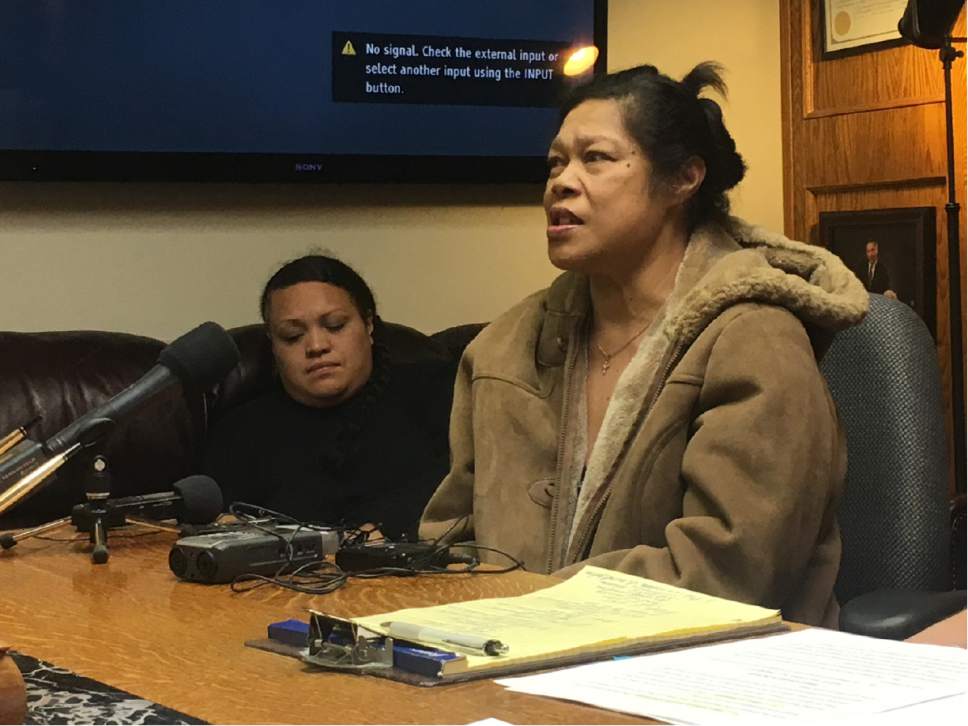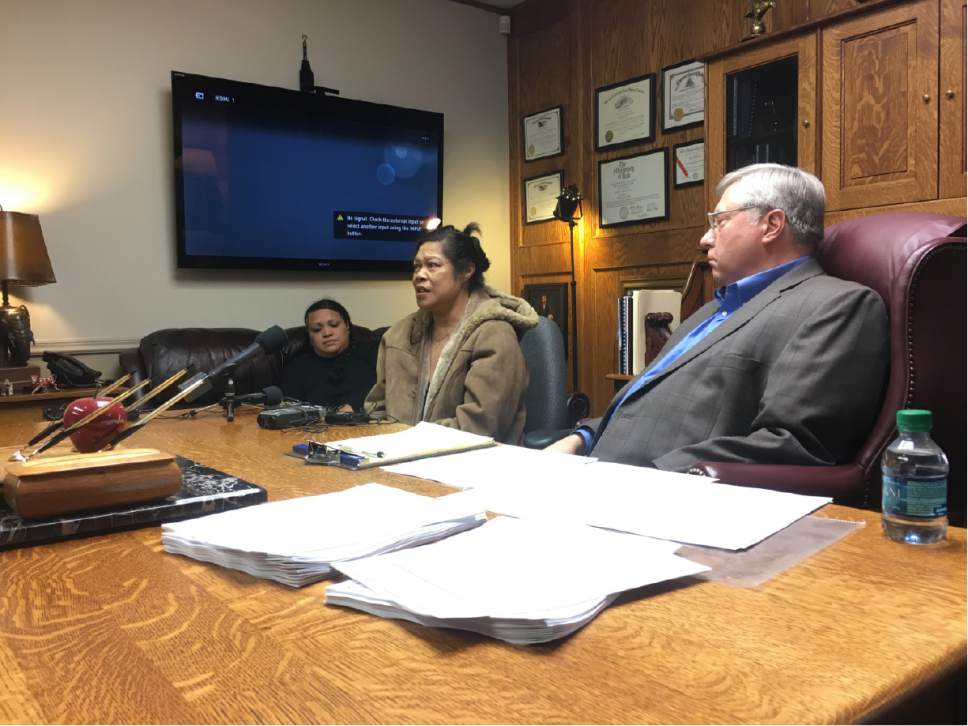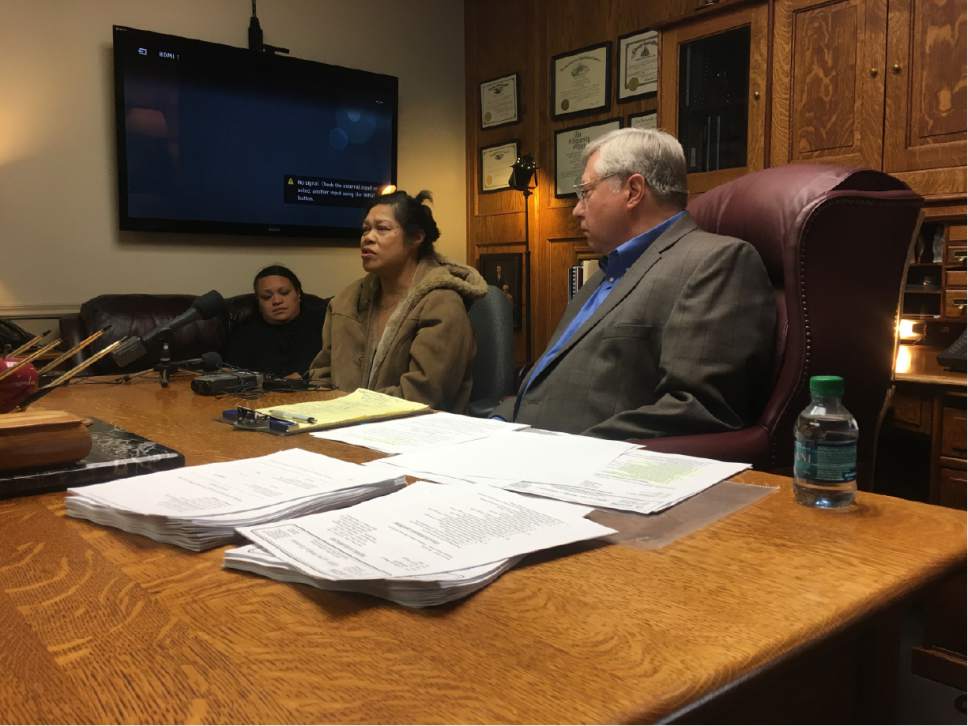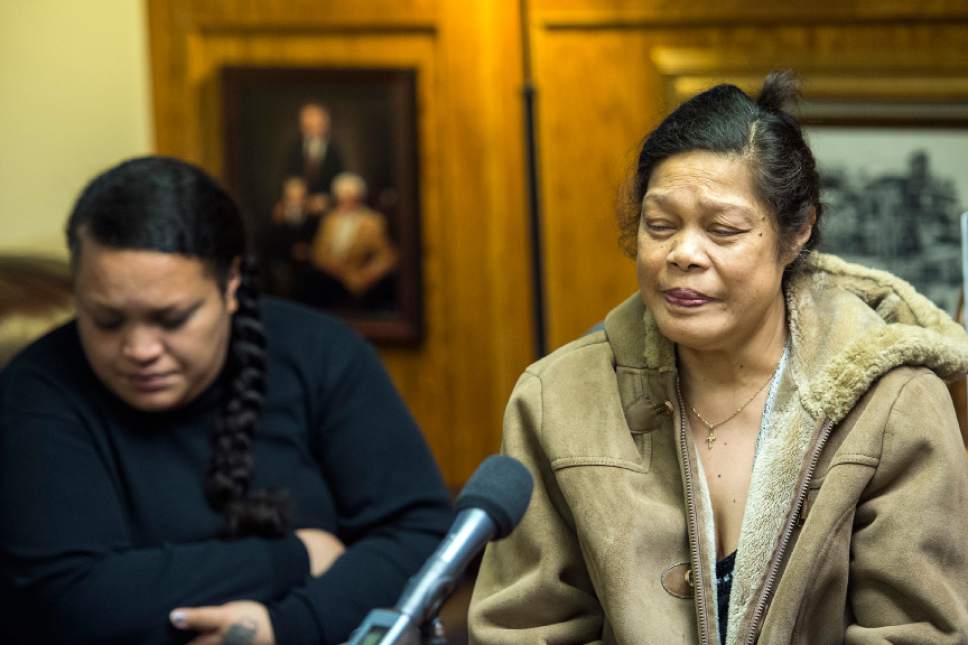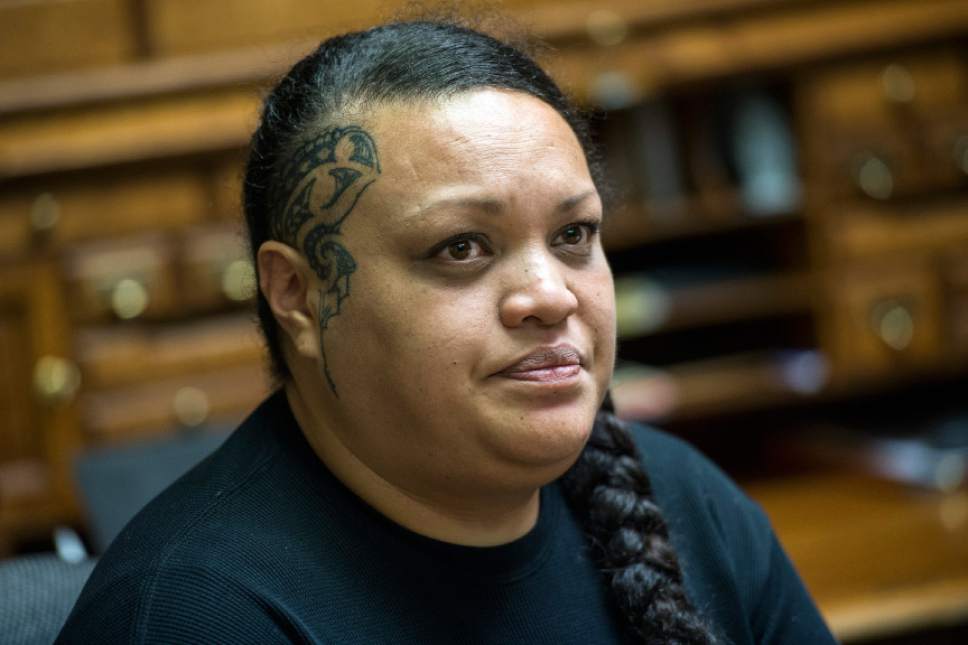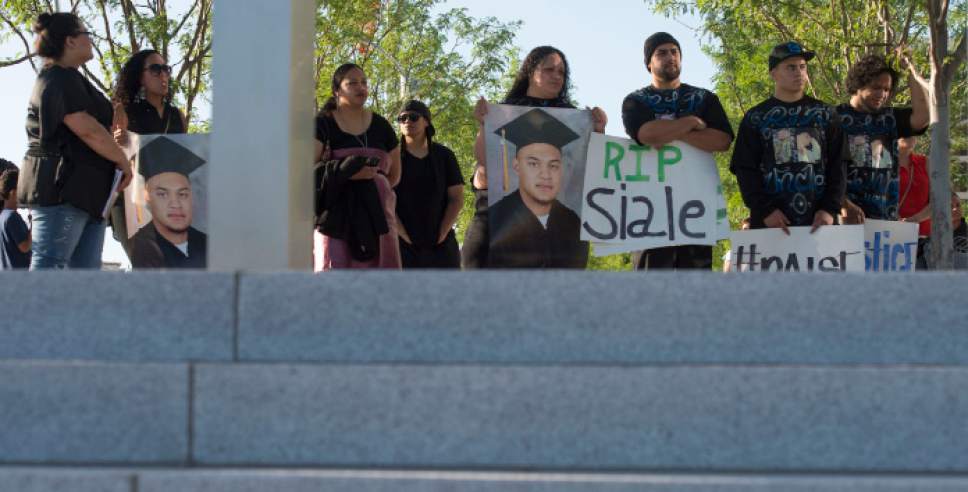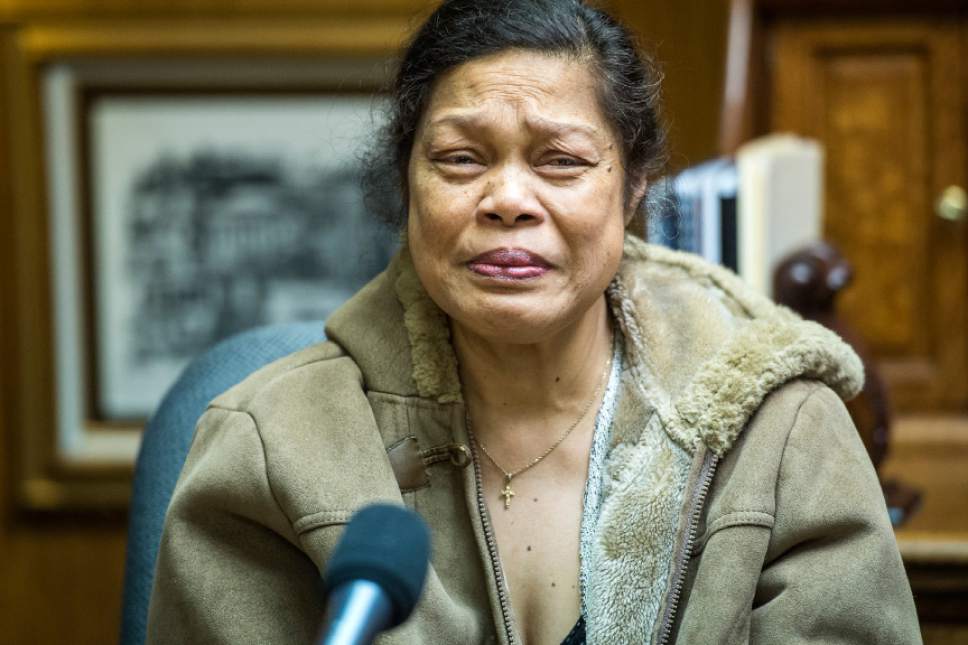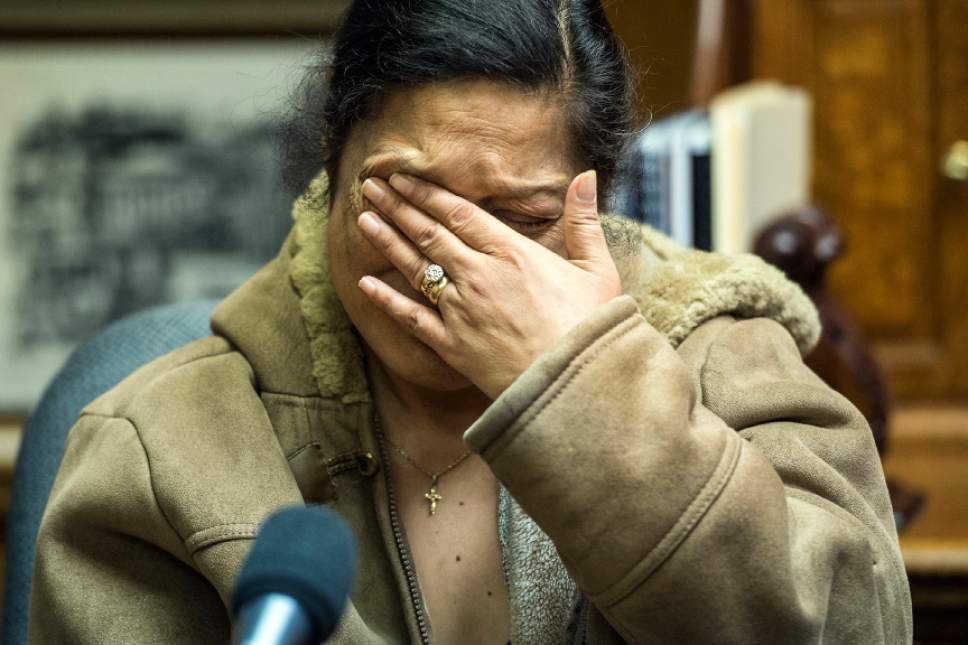This is an archived article that was published on sltrib.com in 2017, and information in the article may be outdated. It is provided only for personal research purposes and may not be reprinted.
Accounts that a U.S. marshal who fatally shot a defendant in a federal courtroom three years ago kept firing, even after the victim had fallen to the floor, are "flatly contradicted" by courtroom video, according to a motion filed Friday in U.S. District Court.
The U.S. Department of Justice's motion — which asks a judge to dismiss a civil rights lawsuit brought by the family of 25-year-old Siale Angilau — contains a second-by-second description of the April 21, 2014 shooting, which is based on courtroom video that has been sealed from the public.
The release of the video has been sought by Angilau's family, and by Utah media entities, including The Salt Lake Tribune. Attorneys for the government have said that releasing it would cause a "significant security concern."
The description of events in the motion rebut an eyewitness account of the shooting, as well as that of the Angilau family's attorney, who was allowed to view the video, claiming the marshal kept firing at Angilau unnecessarily.
The motion, however, claims the marshal is entitled to qualified immunity from being sued because her "use of deadly force was constitutionally reasonable and no clearly established law was violated."
Angilau was shot during the first day of his racketeering trial — held at the then-newly opened federal courthouse.
Vaiola Mataele Tenifa, a former Tongan Crip Gang leader, was testifying about how the gang operated when Angilau jumped up from the defense table and ran at him.
The government's motion states, "Armed with a pen in hand, Angilau ran past the prosecutor at the podium and sprinted past the court reporter" toward Tenifa.
"Someone yelled out 'Whoa Whoa Whoa Whoa Whoa,' to Angilau ... [who] did not pause or stop," the motion states.
Angilau "charged" the witness stand, reaching it in less than 2 seconds.
"Despite his large size [an autopsy report listed him as 6-foot-2 and 253 pounds], Angilau catapulted over the witness stand, hands and arms first (and the arm with the pen raised in a striking motion), going airborne over and into the witness stand," the motion states.
The marshal — not named by any federal agency and identified in court documents as "Jane Doe" — "took position behind [Tenifa] ... and then drew a weapon," the motion states.
"While Angilau was airborne with his feet off the floor, he simultaneously swung his extended right hand up in a violent, aggressive manner at [Tenifa]," the motion states.
"Within one second of Angilau's body crossing over the threshold of the witness stand ... Doe, who was the law enforcement officer in closest proximity to Angilau, rapidly fired four successive shots at Angilau ... " the motions states.
"During Angilau's gymnastic feat, still images show Angilau's body turn in the air while shots were fired — his back to Doe and his front towards the judge at the bench to the left of the witness stand," the motion states. "All four shots were fired in approximately 1.116 seconds.
"No further shots were fired, none of the shots taken were fired while Angilau was passively laying faced down on the ground, and certainly none were while Doe was standing over him."
Tenifa, who had jumped up and back from the witness box, was not injured.
On the day of the shooting, a courtroom witness told The Tribune he thought he heard eight shots. He also said that after Angilau fell to the floor, the marshal kept firing.
After attorney Robert Sykes and Angilau's family were allowed to watch the courtroom video in 2015, Sykes told The Tribune the marshal continued firing as Angilau was on the floor in the witness box.
"It looks like he was down in the witness box and was finished off in the witness box," said Sykes, who filed the family's lawsuit last year.
The government's motion, however, states Sykes' version of events is "flatly contradicted by the incontrovertible recordings of the events."
Angilau's autopsy report says three bullets struck him in the back. A fourth shot entered the left elbow, exited the elbow pit, entered and exited the left bicep and stopped in the left side of Angilau's chest.
In July 2014, the Department of Justice announced the marshal was justified in shooting Angilau.


